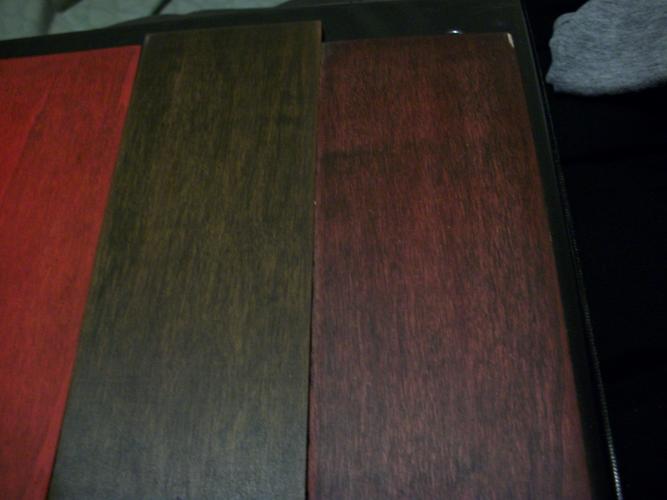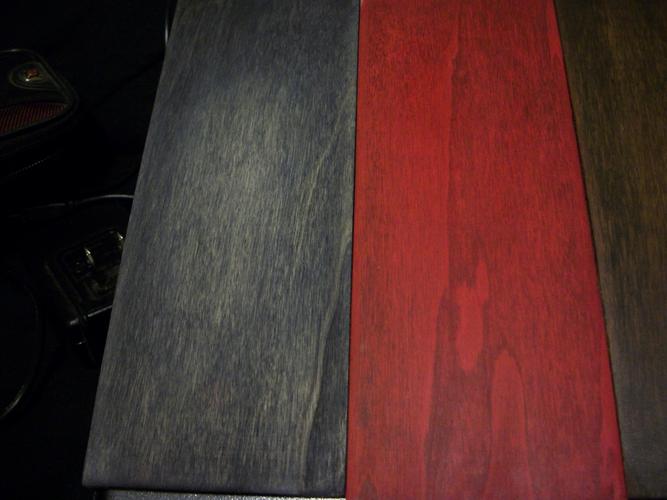Results 1 to 1 of 1
Threaded View
-
02-03-2014, 06:15 AM #1Charles Neil on Shellac Presented by Woodcraft - YouTube[/TD]
 Coloring and grain filling with true oil, and shellac the woodworkers best friend!
Coloring Oil Finishes Alternate Method - YouTube[/TD]Coloring Oil Finishes - YouTube[/TD]
Coloring and grain filling with true oil, and shellac the woodworkers best friend!
Coloring Oil Finishes Alternate Method - YouTube[/TD]Coloring Oil Finishes - YouTube[/TD]I posted this in another thread, but thought it would be a good idea to put it in the workshop for those who like to play around a bit like me
 . I got some useful info from this guy; he is a guitar builder, and another video for some ideas on using shellac. The Danish oil video is the same procedure just using true oil, or you can also use tung oil, or wiping varnish; just stay away from brushing or regular varnish...it will leave some hella' streaks (witness lines) and they're VERY difficult to get out (only made that mistake once experimenting luckily).
. I got some useful info from this guy; he is a guitar builder, and another video for some ideas on using shellac. The Danish oil video is the same procedure just using true oil, or you can also use tung oil, or wiping varnish; just stay away from brushing or regular varnish...it will leave some hella' streaks (witness lines) and they're VERY difficult to get out (only made that mistake once experimenting luckily).
Danish Oil - YouTube[/TD][/TR] [TR] [TD="class: alt1"] [/TD] [/TR]
[TR] [TD="class: tcat, colspan: 2"] [/TR] [TR] [TD="class: alt1"] [/TD] [/TR]
[TR] [TD="class: tcat, colspan: 2"] [/TR] [TR] [TD="class: alt1"] [/TD] [/TR]
[TR] [TD="class: tcat, colspan: 2"] [/TR] [TR] [TD="class: alt1"] [/TD] [/TR]
Here are some test pieces I did with coloring with paint and true oil. I used black leather dye first; let it dry overnight, then used 220 grit paper to sand all the surface dye off while still leaving most in the grain ( I should have done better prep, but this was cheap basswood to play with). Next I mixed some of the paint with the true oil and started rubbing it in. Now the cabernet color actually was the red that mixed with some of the black and I liked it so I left it alone; the other red I put a coat of shellac between the dye and the oil and paint layer. I used shellac to seal the color in, then you just apply your final finish coats of true oil, varnish, epoxy, ca, or poly. The paint has to dry about a week, but rustoleum makes a oil paint accelerator in a spray can (hobby lobby in the paint and brush and canvas isle). Took my dry time down to 3 days, less if you go liter on the paint. I also did a black dye, shellac, gray, shellac, and marine blue (looked like denim when I was done), but I used it to make a bench strop for Kwilliams on the forum here and epoxied some rough leather and crox so he could try the pasted strop method out on his blades, so I didn't have a pic of that one
Hope this helps some folks and gives some creative ideas. HAVE FUN FELLAS'! Attached Images
Attached Images 




 LinkBack URL
LinkBack URL About LinkBacks
About LinkBacks







 Reply With Quote
Reply With Quote